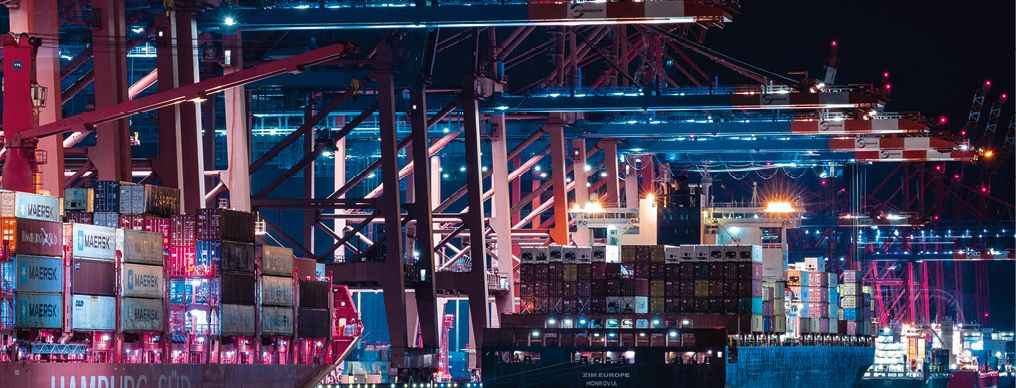The European Commission’s proposed ban on forced labor would apply to EU internal markets and put import and export controls in place. Under the plan outlined by the commission in September 2022, products featuring traces of forced labor at any stage of their supply chain would be withdrawn from the market and disposed of. The recall of products that have already reached end-users in the EU, however, would not be covered by the proposed regulation.
Conducting a thorough due diligence review of forced labor content would be mandatory and would be the key instrument for investigation of any potential supply chain presence of forced labor. The EU plans to provide guidance within 18 months after the proposal would come into force. While a ban would be a powerful stimulus to address the problem of forced- and child labor, human rights NGOs see shortcomings in the commission’s draft proposal.
Unlike similar US legislation, the proposed EU ban would not come into effect from the moment there is suspicion of forced labor but rather, from the point it has been proven.
In addition, the proposed EU legislation does not prioritize the victims of forced labor. It should include remedies for the people affected. Furthermore, it does not include a procedure of withdrawal and disposal of forced-labor products and could lead to the rerouting of forced labor goods to countries that do not have sound policies in place.
From an industry perspective, renewables developers and investors have raised concern about rising raw material prices which are increasing production costs and putting pressure on margins. The compliance costs related to conducting the relevant due diligence to comply with the proposed EU legislation, however, are likely to be a minor burden compared to expected overall pricing pressure.
Six steps
Companies can take six steps to be ready for EU forced labor rules.
Popular content
- Conduct due diligence based on existing EU and OECD guidelines to address the risk of forced labor in their operations and supply chains.
- Collect traceability information on any procured technology to identify and assess the risk of traces of forced labor. Such data could come in the form of bills of materials, third-party audits, or certificates. However, when it comes to Chinese suppliers, verifiable third-party assessment of their supply chains is challenging due to the Anti-Foreign Sanctions Law introduced in the country in June 2021. In this case, prior to engaging with a technology supplier, an initial risk assessment must be performed, as per the next point, and amended contract templates can serve as risk mitigation.
- Start mapping potential risk sources and develop a remediation plan. Identify the region where the technology is manufactured, where materials are sourced from, and whether those regions are known for human rights violations.
- Adopt a mitigation plan and a remediation procedure focusing on victims of forced labor. Companies that unknowingly participate in forced labor should be part of the solution and the type of remediation needed to address the unique circumstances of the victims can include financial compensation, rehabilitation etc.
- Amend contract templates to mitigate risk. Contractual obligations need to be thought through to protect companies from the risk of any form of human rights violation at any stage of the supply chain, as well as to include remedies in the event such risks are identified. Remedies should address both the risks to the company and the victims of human rights violation. It should be noted that the legislation in territories of origin may differ, a promise of abiding by the law of the country of origin will not guarantee a lack of human rights violations.
- Start changing suppliers or increase recycled material content to minimize the use of primary resources. Also, sourcing materials directly from suppliers minimizes the complexity of the supply chain and increases traceability. Direct sourcing enables companies to know their suppliers, visit their production facilities, and observe the wellbeing of nearby communities.
Call to action
There is an increasing body of research focusing on human rights violations in renewable energy supply chains and manufacturing processes. There is a growing awareness of just how serious this issue is. Forced- and child labor are present across industries such as food, electronics, textiles, and automotive, to name just a few.
There is a risk that everyday consumers are contributing to human rights violations and injustice. The true cost of what consumers buy is often paid by someone else, someone end users have never met. Upgrading moral standards sometimes comes at an economic cost but it must be done anyway, simply because it is the right thing to do.
The renewables sector has a chance to show leadership once again, building on the incredible contribution it has made towards addressing the climate crisis. This time, let’s walk the talk on environmental, social, and corporate governance policy by working to eliminate forced labor from supply chains.
 About the author: Diana Zadorozhna is a climate change and sustainability consultant at Everoze who began working on climate change mitigation in 2009. Since 2017 she has been working on the clean energy transition and energy sector reform in Ukraine. She holds an environmental sciences and policy degree.
About the author: Diana Zadorozhna is a climate change and sustainability consultant at Everoze who began working on climate change mitigation in 2009. Since 2017 she has been working on the clean energy transition and energy sector reform in Ukraine. She holds an environmental sciences and policy degree.
The views and opinions expressed in this article are the author’s own, and do not necessarily reflect those held by pv magazine.
This content is protected by copyright and may not be reused. If you want to cooperate with us and would like to reuse some of our content, please contact: editors@pv-magazine.com.


By submitting this form you agree to pv magazine using your data for the purposes of publishing your comment.
Your personal data will only be disclosed or otherwise transmitted to third parties for the purposes of spam filtering or if this is necessary for technical maintenance of the website. Any other transfer to third parties will not take place unless this is justified on the basis of applicable data protection regulations or if pv magazine is legally obliged to do so.
You may revoke this consent at any time with effect for the future, in which case your personal data will be deleted immediately. Otherwise, your data will be deleted if pv magazine has processed your request or the purpose of data storage is fulfilled.
Further information on data privacy can be found in our Data Protection Policy.